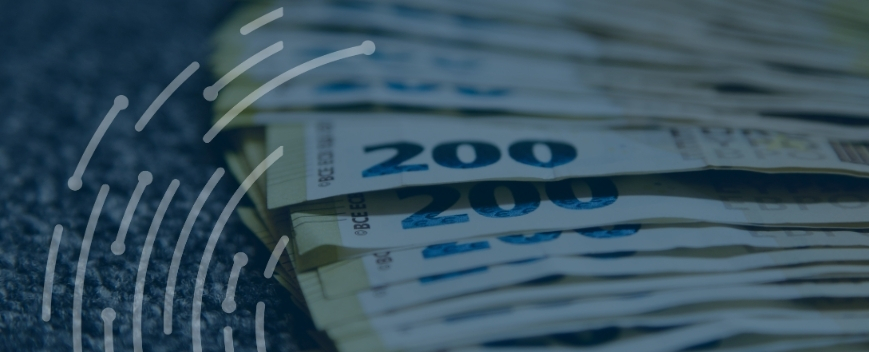What is a Debtor (Debitor)?

Access trade, receivables and supply chain finance
We assist companies to access trade and receivables finance through our relationships with 270+ banks, funds and alternative finance houses.
Get StartedContents
What is a Debtor (Debitor)?
Debt is a very popular form of funding in international trade that companies and individuals use to ensure that they are able to expand and prosper in the best way possible. Debt allows to manage many company activities and procedures without any cash flow problems.
Who is a Debtor?
A debtor is an individual or an entity that agrees to accept money from another party immediately in return for an obligation to pay back the money received in due time. In other words, a debtor owes money to someone else or to an organisation. In each case, the debtor owes money and remains a debtor until the full amount has been paid back. They bear responsibility for that particular debt. A debtor is often obliged to repay a debt with or without interest incurred.
—–
The relationship between creditors and debtors is significantly complicated by the competing interests of both parties. The relationship typically means that the debtor has obtained something from the creditor, in exchange for which the debtor has agreed to make a refund at a later date. In case of breach of an agreement between a creditor and a debtor a creditor might be forced to take anything or everything he requires to get sufficient redress for the debt the debtor owes him.
Types of Debtors
There are several types of debtors and the classification of creditors will depend on the nature of the debt involved and the context of the debtor-creditor relationship. Some of the different types of creditors are discussed below.
Trade debtors
A trade debtor is a business, company or customer who has not yet paid you for goods or services already delivered to them. Trade debts will arise from amounts owed to a business or company by customers who have already been invoiced for goods and services already supplied.
Notes receivables
A note receivable is a written promise to receive a certain sum of money at a later specified date from a debtor. Often the money paid is made up of interest and principal. Creditors use this note to make a debt legal and enforceable. The debtor is the party that writes the note promising to make payments at a later specified date. In a note receivable the principal shall be the specified sum of the note and the maturity date shall be the date on which the note is due.
Debtor Rights
Debtors rights are rights granted by statute to those who borrow money for personal or commercial reasons. These rights protect debtors from unfair treatment by creditors. In consultation with the International Monetary Fund (IMF), the World Bank and the United Nations Commission on International Trade Law (UNCITRAL) designed the Insolvency and Creditor Rights Standard (ICR Standard) to represent an international consensus on best practices for assessing and strengthening national insolvency and creditor rights systems.
The ICR calls for a modern credit-based economy should facilitate broad access to credit at affordable rates through the widest possible range of credit products (secured and unsecured) inspired by a complete, integrated and harmonized commercial law system that promote; Reliable and affordable means for credit protection and the minimisation of non-performance and default risks. Credit instruments transparency and fair treatment of creditors ‘and debtors’ rights, including adequate protection of natural persons with regard to consumer debts and assets. Affordable, transparent and reasonably predictable mechanisms for enforcing unsecured and secured credit claims through individual actions (e.g. enforcement and enforcement) or collective action (e.g. insolvency) and a consistent policy governing access to credit, property rights, credit protection, credit risk management and recovery and insolvency through procedurally and substantively compatible laws and regulations.

How Debtor/Creditor Relationships Arise
Raising Capital and Debt finance
The relationship between the creditor and the debtor is one of the most important for any kind of business practice to be understood. An individual’s ability to receive money/funds in order to start a business, or to help with the day-to-day activities of a company, such as material purchase and wage payments etc. is referred to as his ability to increase capital. Raising of capital is often made possible by securing of loans from creditors.
Debt finance on the other hand is simply the acquisition of a loan with an intent to purchase an asset. Debt finance can also be termed as the process of raising cash for working capital or capital expenditure by means of secured or non-secured loans. Debt financing transpires when a firm raises money through the sale of debt instruments to individuals and/or institutional investors for working capital or capital expenses. Debt financing tends to come with strict conditions or agreements concerning interest and principal payments, the maintenance of certain financial ratios, and more.
Trade receivables
Trade receivable is the amount that the company has charged to its customer for the sale of its goods or the provision of services for which the amount has not yet been paid by the customer and is shown as an asset in the company’s balance sheet. Many companies operate by providing customers with a 30/60 or sometimes 90 days credit period.
Recovering Debts From Debtors / Debt Collection Process
Debt recovery is the process of hiring of a third party by a creditor for the purposes of recouping money owned by a debtor who fails to repay his/her debt within a deadline or commercially suitable timeline that had been agreed upon the acquisition of a loan.
After the hiring of third party collection agency by the creditor, he forwards the claim details and any other supporting documents to the debt collector noting the inability to pay the debt as per the agreed terms of agreement. Once the debt collection company examines and acknowledges the petition, the recovery process begins with a letter of demand sent to the debtor and an acknowledgment letter sent to the client.
The debt recovery process involves; the collection agency contacting the debtor, the collection agency then proceeds to forward the claim to affiliated lawyers in case the debtor fails to cooperate, the lawyer then studies the case and determines which legal action could be useful, if the creditor authorizes the legal action then lawyers prepare a complaint and file, in case the creditor fails to authorize legal action the collection service will go on for an additional 60days and then the account will be closed.
Debt collection is the attempt by a creditor to recover credit and loans offered to consumers and have not yet been paid back as agreed. In debt collection there is no third party involved as compared to debt recovery.
The debt collection process starts when a customer defaults payment that is due. A debtor ha a period of 30days from the bill due date to pay the debt before the creditor reports to the credit bureaus. During this period the creditor attempts to reach the debtor by phone, E-mail or letter to collect payment and any additional fees. After the 30days period the creditor tries to collect the debt by reporting to a credit bureau and closing all accounts affiliated to the debtor. After a period of 60-180 days the creditor may choose to go to court and file a law suit or write off the debt from his books then sell it off to a debt collection agency.
Debtor-Creditor relationship is key in carrying out international trade as it allows the movement of money from one party to another hence facilitating the growth of trade and keeping some business afloat. It is therefore important for creditors and debtors to understand their rights and obligations for their own mutual benefit.
Our trade finance partners
- Invoice Finance Resources
- All Invoice Finance Topics
- Podcasts
- Videos
- Conferences




















